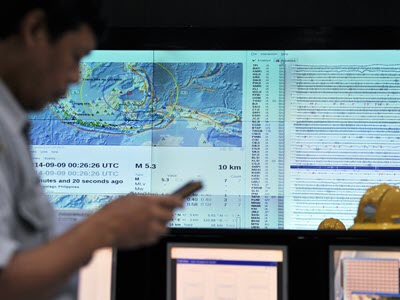The Role of Technology in Disaster Management
For NBR’s ongoing project examining disaster management cooperation, Thomas Lutken interviewed T.H. Schee of Open Knowledge Taiwan on the role that technology can play in disaster response and management. Mr. Schee illustrates the ways that technology, both traditional and cutting-edge, can play a role during a crisis, and emphasizes the importance of educating decision-makers on the strengths and limitations of technology as a tool for all stages of disaster management.
Disasters affect every aspect of society, from international regions to local towns. Is there a level (international, national, state, city) that you think is most critical, particularly in the context of how technology can help in disaster response?
Expectations of where and how technology in disaster response could be implemented vary from place to place. One thing of which we are continually reminded is that the introduction of technical solutions is never an end goal itself in disaster response. Proven but less fancy technology might be unattractive, but generally it has a lower entry barrier to access, allowing it to be promulgated in a thrifty and efficient fashion during a major crisis. Taking SMS (short message system) as an example, this technology is supported by every phone in the market by default, and telecommunications gateways at the local level can relay messages when the power grid comes back. It was designed to be resilient, and the system can handle a large number of messages when internet service is not available. Such concerns about the adaptability and resilience of technical solutions on the operational level are very much decisive.
Also keep in mind that the users of technology are not just the most vulnerable, but extend up through the whole chain of command and control in a disaster response. At the regional level, there is a perennial struggle between existing protocols and ways of exchanging information that needs to be addressed across borders. Sometimes these doctrines are completely abandoned because the situation on the ground could be so dire that the response teams just pick up whatever is available to them. Having said that, for a technology to be effective, cooperation between responders, users, and providers from the very initial stage of development is of top priority.
What are some of the ways technology can be incorporated into the longer-term avoidance and planning stages of disaster management, namely the mitigation and preparation phases?
One example of technology being incorporated into long-term planning is how car manufacturers have used data gathered from their fleets to help identify operational roads in the aftermath of an earthquake. That case is an excellent example of a matured private-sector solution that already has a solid user base that can be repurposed in times of crisis, and it works. Mobility in the aftermath of a disaster is always a hard problem to tackle anywhere in the world and raises infrastructure-level questions. Supplying timely and accurate information can greatly benefit the mitigation phase, but in the long-term preparedness stage good scenario planning is essential. The large amounts of mobility data collected by car manufacturers can be further researched to reflect what went wrong when evacuation of affected groups was unavoidable.
Mitigation of disaster should never be an afterthought problem, but incorporation of technological solutions needs a base of “legitimacy” in times of both peace and crisis. It would be much more sustainable if we think of the process in this way. One good example is how drone technology that that scans and creates 3D building contours for construction can be repurposed for rescue teams when they need to venture into a crumbled site to identify the areas most affected by a calamity.
Are any key stakeholders not represented adequately in these conversations? If so, who are they, and how can their considerations be better brought into the discussion?
The decision-makers who need to use the technology are often missing in the discussion. Technological solutions exist to serve a coherent set of demands, and in identifying risk and supporting deployment of disaster-reduction plans, only the decision-makers have appropriate authorization to check status across the whole chain of response. If what needs to be seen had not been clearly communicated prior to the development of a technology, the system would often fail to deliver at the right time, with the right granularity of information, and within budget. It could lead to misinterpreting the potential of a set of technical solutions and creating false expectations.
A common issue is locals calling for help through social media rather than traditional support lines. Response teams are not supposed to “monitor” social media platforms and are often overwhelmed. How command centers sift through ad hoc information and respond appropriately becomes both a technological and a human capacity problem. Public outcry on social media could even end up a PR disaster for decision-makers. Decision-makers need not be tech-savvy, but they should be informed of opportunities and the cost of a certain set of technical measures. It is better to engage decision-makers on a constant basis before a crisis hits and leaves everyone in panic mode, which could reinforce mistrust of technology.
T.H. Schee is a digital veteran with twenty years of experience in the private and NGO sectors. He was a founding member of the Taiwan Internet Governance Forum and provided his expertise on digital crisis response to the UN Global Geospatial Information Management group. He has served as an adviser to government agencies and the city of Taipei (2016–18) and is a stalwart writer on the intersection of digital and tech policies.
This interview was conducted by Thomas Lutken, a project manager with the Energy and Environmental Affairs group at NBR.



